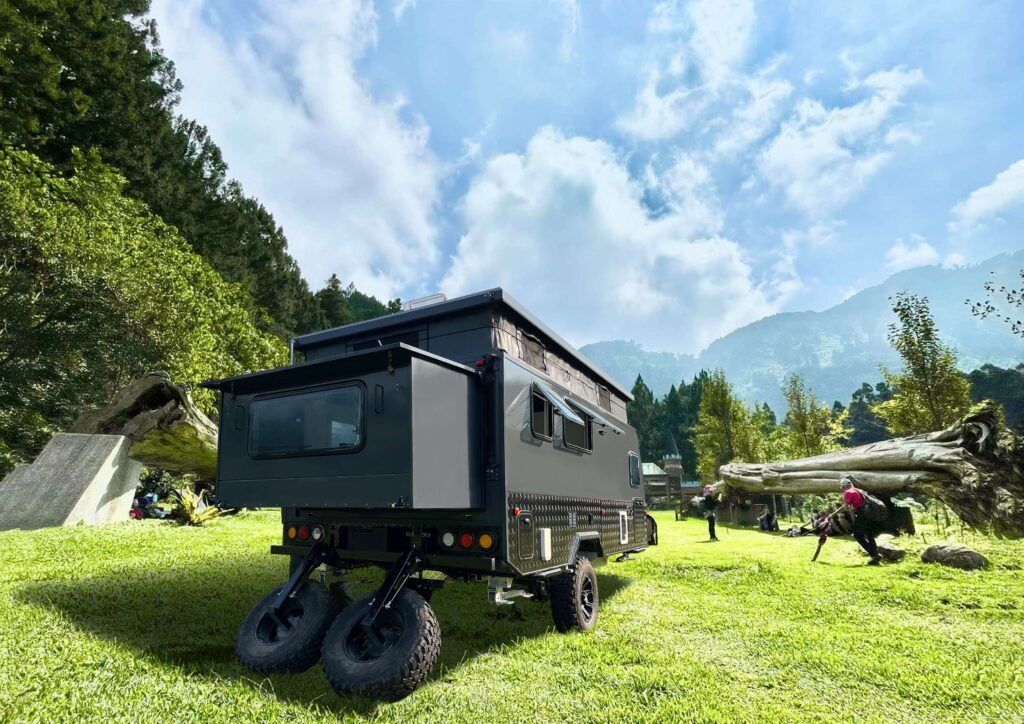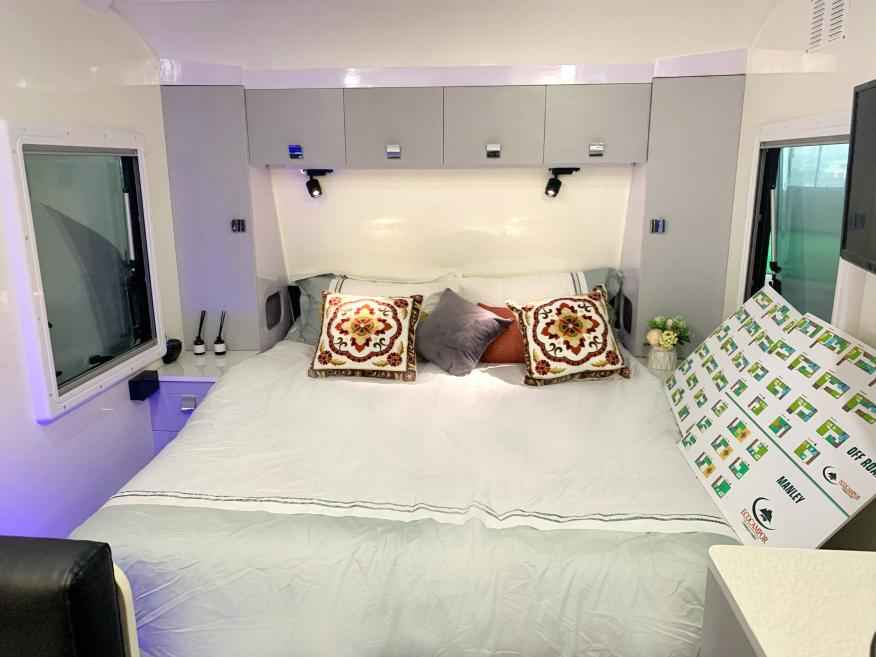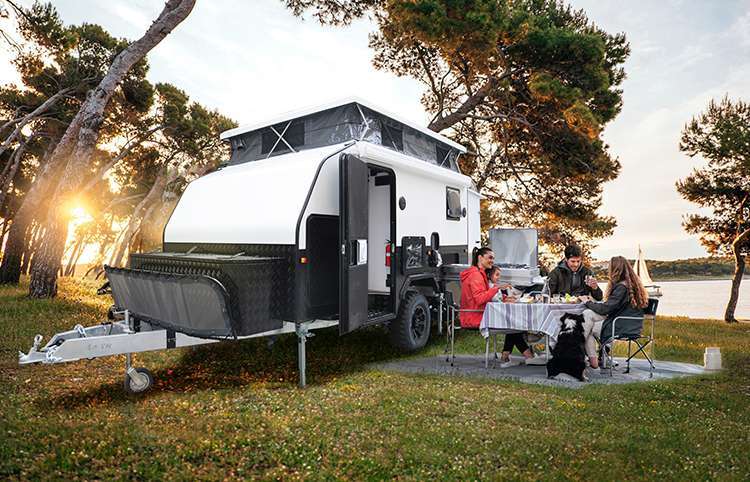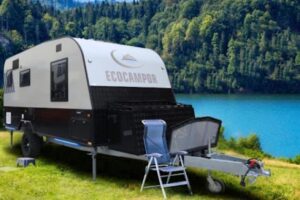Pop-top caravans, also known as hybrid caravans or expandable caravans, are a type of recreational vehicle that can be expanded vertically to provide more headroom and living space while camping and collapsed down to a more compact size for easier towing and storage.
Are Pop Top Caravans Good?
Yes, yes they are. And today I’ll discuss whether they’re good for you, and the particular areas you frequent.
Lately, there has been a growing trend toward exploring breathtaking nature; and it won’t be long before other places follow suit. The US has a marked increase in RV purchases. In many areas of the US are ideal adventure grounds for the pop-up vans.
While some people choose to simply bring a tent and a sleeping bag, along with other camping essentials in their trunk; others opt for more luxurious travel options. This mode of transport for leisure and travel has long been a popular choice for campers and adventurers. And they’re just getting even more popular in the current state of affairs.
Many pop tops for camper vans are emerging as the cheaper, more compact alternative to standard caravans. If you are considering buying a pop top camper for your travels, here is all you need to know before buying; including the hows, whys, and the pros, and cons.

What is a Pop Top Caravan?
Hold-up. Just before we discuss the pros and cons of pop top caravans, it will be to our benefit to first understand what a pop top caravan really is. If you already know about this, you may skip this part, but I suggest you give it a read. You might find something in it for you as well. 😉
Is it just basically, a caravan with a roof that you can expand and erect? Yes! This is essential to all the differences between a pop-top caravan and a regular one. Today’s star is the same as a standard caravan but with just one main difference: the canopy.
Aptly named, the pop top has a top that you can pop open and close to increase headroom and facilitate easier trailer transport. There are several types of hinged roofs available. These include hard, heavier roofs or softer and lighter fabric tops.
The hooded caravan means you can easily raise the roof in less than 2 minutes. The added space gives you more usable space when parked. Plus, when this space is no longer available and the journey is about to begin, one can lower the roof in even less time. When on the road, the built-in canopy in the caravan is placed as if it were a rigid caravan. This makes it easier to transport.
Caravans of this type are ideal for long routes. In essence, the raised roof gives the caravan more space when it is used for sleeping or living. But it also gives you the ease of a smaller, shorter vehicle when in transport, allowing it to become compact.
Pop Up Camper Pros and Cons
So, are pop-top caravans good? And we’re not talking about them in general but regarding their compatibility with you and your usual playing grounds. To establish your answer to that question, we present to you, the advantages and disadvantages of the pop top caravan.
Pros:
- Affordable
- Ease of Transport
- Lower Height
- Less fuel consumption
- Ease of Storage
- Brighter and airy
- Good Resale Value
Cons:
- Less Space
- Less than-ideal insulation
- Strong Winds
The Pros
More affordable
Pop-top caravans are generally less expensive than traditional caravans of the same size, as they require less material to construct. Their average price in the US is around $7,000.
Ease of transport
Because of its compact size, a pop-top caravan with the top down is much easier to transport. As mentioned in the beginning, these caravans usually do not weigh as much as the towing vehicle. It also has lesser wind resistance and is easier to maneuver on trickier roads compared to more conventional caravans.
Lower height
When the roof is collapsed, pop-top caravans have a lower profile, making them easier to store in a garage or carport.
Less fuel consumption
Because there is less drag or wind resistance with a pop-top caravan in tow, due to its lower roof height, the caravan also offers better fuel economy and stability. Add to that, its lower weight is also a contributing factor.
We found a wonderful test made by our good friends at GoRV.com.au on the fuel economy of two caravans of roughly the same size: with one a pop top, and one a conventional caravan. The tested details are mentioned below.
Pop To vs Conventional Caravan
To determine the impact of caravan height on fuel consumption, a comprehensive test was conducted. The experiment aimed to compare the fuel efficiency of towing a pop-top caravan against that of a full-height caravan over a set distance, with conditions kept as consistent as possible.
The initial phase of the test involved towing a pop-top caravan. The vehicle used for the test, a 4WD with a 3L engine, was filled with diesel at the outset. Departing from Goldstream’s headquarters in Pakenham, Victoria, the journey extended east towards Traralgon, incorporating 15 minutes of stop-start traffic within the city to mimic typical road conditions. The round trip covered 209.8 kilometers. Upon returning and refilling the diesel tank, it was recorded that 30.63 liters of fuel had been consumed.
The second phase repeated the exact scenario, this time with a full-height caravan in tow. The route and driving conditions, including a maintained speed of approximately 95km/h and efforts to drive smoothly, were mirrored. After completing another 209.8 kilometers, a fuel consumption of 34.96 liters was noted upon refilling at the same station.
Comparative Results
Pop-Top Caravan Towing: The test showed that towing the pop-top caravan, which was loaded to match the full-height caravan in weight, resulted in a fuel consumption rate of 14.6 liters per 100 kilometers (6.85km/L).
Full-Height Caravan Towing: Under identical conditions, towing the full-height caravan led to a higher consumption of 16.7 liters per 100 kilometers (6km/L).
| Pop-Top | Caravan | |
| Km/L | 6.85 | 6 |
| L/100km | 14.6 | 16.7 |
| Cost to refill | $44.69 | $51.01 |
The comparison revealed a noticeable difference in fuel efficiency between the two caravan types. Towing the pop-top, with its lower profile, was more fuel-efficient, consuming 2.1 liters less fuel per 100 kilometers than the full-height caravan.
This equates to a cost difference of $3.06 per 100 kilometers, based on a diesel price of $1.46 per liter at the time of test. While seemingly minor, for long-distance caravanners who frequently travel 500-600 kilometers in a day, the savings can add up, amounting to around $30.60 over 1000 kilometers – equivalent to the cost of a casual lunch out.
This test underscores the impact of caravan design on fuel consumption, highlighting the pop-top’s lower towing profile as a cost-effective option for frequent travelers.
Back to more advantaged of pop top caravans.
Ease of storage
Pop tops are usually way smaller than regular caravans that offer just as much living space. The storage when not in use aspect is another area where they shine. Due to its smaller dimensions, you can store this rig in a lower garage or under a carport when you’re not out on road trips. Some can even fit in carports with lower-than-average heights.
Brighter, more airy
Many pop tops have roofs made mostly entirely with canvas, or even more common still are those with extendable sides made of canvas. This helps your caravan take in more light, especially if made with brighter fabric. It’s also not as stifling as harder frames in warmer, more humid weather.
Resale value
A cursory check of the market revealed that they actually depreciate less in value compared to other campers. So in the long run, a used, well-cared-for pop top can actually fetch a good chunk if you decide to sell yours in the future.
The Cons
The space
We might have highlighted the added space and headroom that the pop top can give but it’s still not as big as most conventional caravans. So if you’re after that extra storage, you might be better off with something else. After all, a small RV, beside with a lifting roof, is still small with an extension. It is not designed to accommodate many people if you are a big family or group.
And even with the roof fully elevated, some models do not offer maximum headroom that covers the entire length of the caravan.
Less than-ideal insulation
If you’re hoping to pass cold weather for an extended period, or god-forbid, some winters in your caravan, then run away from this one. With that extendable roof that is mostly made of lighter, airier fabric than a cold, hard frame, you can’t hope to be well-insulated in this rig.
In addition, the fabric sides on most pop tops, no matter how durable, are still potential weak spots for sudden tears from sharp branches or unexpected water leaks in rainy weather.
Strong winds
If you’re a light sleeper, the fabric sides may or may not become a concern on a windy night, depending on how they’re built. They can flap around in high winds and keep light sleepers awake.
And in particularly windy weather or storms, you may need to lower the roof altogether.
The Verdict
So after that rundown of pros and cons, are pop top caravans good?
I still say, yes if you’re going on a journey with mild to hot and humid weather. Or if some of the roads you’re taking are low-hanging. If you don’t mind a bit more compact space than a conventional caravan; but still has pretty good headroom. Or if you have storage issues or a garage or carport with low head clearance. Suppose you drive a smaller car and want a maneuverable rig. Or if you don’t mind having to raise and lower your roof every time you park for the night you prefer a more airy and brighter space instead if you are a bit short on funds. Or if you plan to take good care of your caravan and sell it in the future.
If you say yes to any of 3 or 4 of these “if’s”, then go get your pop top caravan!
Conclusion
Overall, pop-top caravans are a good choice for those who want a more spacious and affordable alternative to traditional caravans, but they may not be ideal for those who need a lot of storage space or who want a caravan that can be quickly and easily set up.





